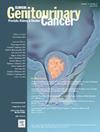Evaluation of the Performance of Systematic Sampling Combined With MRI-TRUS Fusion Biopsy and Concordance After Radical Prostatectomy
IF 2.7
3区 医学
Q3 ONCOLOGY
引用次数: 0
Abstract
Background
MRI-guided prostate biopsy allows the targeted sampling of suspicious lesions. However, limitations of MRI and MRI-TRUS fusion biopsy techniques may lead to an underdiagnosis, and thus, some patients may benefit from combining systematic sampling with targeted sampling during prostate biopsy. We aim to assess the diagnostic yield of systematic sampling on MRI-TRUS fusion biopsy pathological result and the histopathological concordance after radical prostatectomy.
Methods
We retrospectively compared the prostate cancer (PCa) and clinically significant prostate cancer (csPCa) detection rate (CDR) during the MRI-TRUS fusion biopsy in the targeted sampling with the combination of targeted and systematic samplings. A subgroups analysis was performed considering the PSA density, PIRADS score and the personal history of previous biopsies. We also evaluated the concordance after radical prostatectomy.
Results
188 patients submitted to targeted and systematic sampling during the MRI-TRUS fusion biopsy were included. Overall increases of 5.8% and 2.2% in terms of CDR of PCa and csPCa were observed by adding a systematic sampling over the targeted one. Patients with a PIRADS score 4 to 5, PSA density ≥ 0.15 ng/mL2, or a history of biopsy showed a significant increase in CDR. Combining systematic sampling with targeted sampling improved the concordance in ISUP grade by 10% (43.6% vs 33.3%) and the kappa statistic by 0.08 (0.20 vs. 0.12).
Conclusions
In our experience, the combination of systematic sampling improves the cancer detection rate, especially in patients with highly suspicious radiological findings or a history of biopsy, and increases the concordance after radical prostatectomy.
根治性前列腺切除术后系统取样联合MRI-TRUS融合活检及一致性的评价
mri引导下的前列腺活检允许对可疑病变进行靶向取样。然而,MRI和MRI- trus融合活检技术的局限性可能导致诊断不足,因此,在前列腺活检中,一些患者可能受益于系统采样和靶向采样的结合。我们的目的是评估系统取样对根治性前列腺切除术后MRI-TRUS融合活检病理结果和组织病理学一致性的诊断率。方法回顾性比较MRI-TRUS融合活检中前列腺癌(PCa)和临床显著性前列腺癌(csPCa)的检出率(CDR)。亚组分析考虑PSA密度、PIRADS评分和既往活检的个人病史。我们还评估了根治性前列腺切除术后的一致性。结果188例患者在MRI-TRUS融合活检期间接受了有针对性和系统的采样。通过在目标样本上增加系统采样,观察到PCa和csPCa的CDR总体增加了5.8%和2.2%。PIRADS评分为4 ~ 5分、PSA密度≥0.15 ng/mL2或有活检史的患者CDR显著增加。系统抽样与针对性抽样相结合,ISUP分级一致性提高10% (43.6% vs 33.3%), kappa统计量提高0.08 (0.20 vs 0.12)。结论根据我们的经验,结合系统取样可以提高癌症的检出率,特别是对有高度可疑的影像学表现或活检史的患者,并增加根治性前列腺切除术后的一致性。
本文章由计算机程序翻译,如有差异,请以英文原文为准。
求助全文
约1分钟内获得全文
求助全文
来源期刊

Clinical genitourinary cancer
医学-泌尿学与肾脏学
CiteScore
5.20
自引率
6.20%
发文量
201
审稿时长
54 days
期刊介绍:
Clinical Genitourinary Cancer is a peer-reviewed journal that publishes original articles describing various aspects of clinical and translational research in genitourinary cancers. Clinical Genitourinary Cancer is devoted to articles on detection, diagnosis, prevention, and treatment of genitourinary cancers. The main emphasis is on recent scientific developments in all areas related to genitourinary malignancies. Specific areas of interest include clinical research and mechanistic approaches; drug sensitivity and resistance; gene and antisense therapy; pathology, markers, and prognostic indicators; chemoprevention strategies; multimodality therapy; and integration of various approaches.
 求助内容:
求助内容: 应助结果提醒方式:
应助结果提醒方式:


